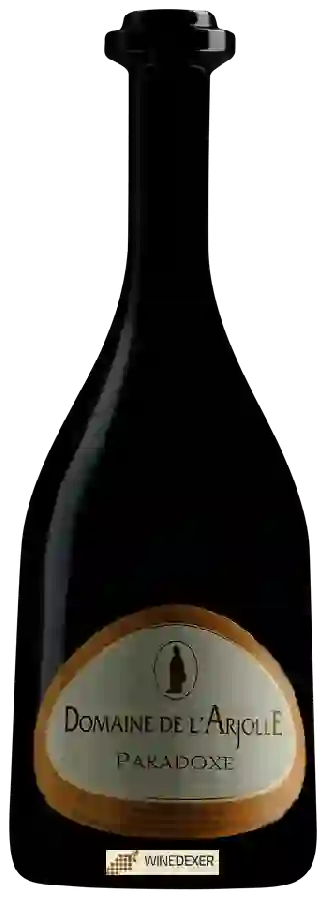
Domaine de l'ArjolleParadoxe
This wine is a blend of 2 varietals which are the Cabernet franc and the Merlot.
In the mouth this red wine is a powerful with a nice balance between acidity and tannins.
This wine generally goes well with beef, veal or pasta.
The Paradoxe of the Domaine de l'Arjolle is in the top 90 of wines of Côtes de Thongue.
Taste structure of the Paradoxe from the Domaine de l'Arjolle
Light | Bold | |
Smooth | Tannic | |
Dry | Sweet | |
Soft | Acidic |
In the mouth the Paradoxe of Domaine de l'Arjolle in the region of Pays d'Oc is a powerful with a nice balance between acidity and tannins.
Wine flavors and olphactive analysis
On the nose the Paradoxe of Domaine de l'Arjolle in the region of Pays d'Oc often reveals types of flavors of cherry, oaky or blackberry and sometimes also flavors of vanilla, coffee or licorice.
Food and wine pairings with Paradoxe
Pairings that work perfectly with Paradoxe
Original food and wine pairings with Paradoxe
The Paradoxe of Domaine de l'Arjolle matches generally quite well with dishes of beef, pasta or veal such as recipes of navarin of lamb, pasta shells or osso buco.
Details and technical informations about Domaine de l'Arjolle's Paradoxe.
Discover the grape variety: Cabernet franc
Cabernet Franc is one of the oldest red grape varieties in Bordeaux. The Libourne region is its terroir where it develops best. The terroirs of Saint-Emilion and Fronsac allow it to mature and develop its best range of aromas. It is also the majority in many blends. The very famous Château Cheval Blanc, for example, uses 60% Cabernet Franc. The wines produced with Cabernet Franc are medium in colour with fine tannins and subtle aromas of small red fruits and spices. When blended with Merlot and Cabernet Sauvignon, it brings complexity and a bouquet of aromas to the wine. It produces fruity wines that can be drunk quite quickly, but whose great vintages can be kept for a long time. It is an earlier grape variety than Cabernet Sauvignon, which means that it is planted as far north as the Loire Valley. In Anjou, it is also used to make sweet rosé wines. Cabernet Franc is now used in some twenty countries in Europe and throughout the world.
Last vintages of this wine
The best vintages of Paradoxe from Domaine de l'Arjolle are 2018, 2017, 1999, 2011 and 2016.
Informations about the Domaine de l'Arjolle
The Domaine de l'Arjolle is one of of the world's greatest estates. It offers 67 wines for sale in the of Côtes de Thongue to come and discover on site or to buy online.
The wine region of Côtes de Thongue
The wine region of Côtes de Thongue is located in the region of Pays d'Oc of Vin de Pays of France. Wineries and vineyards like the Domaine de l'Arjolle or the Domaine de l'Arjolle produce mainly wines red, white and pink. The most planted grape varieties in the region of Côtes de Thongue are Cabernet-Sauvignon, Merlot and Chardonnay, they are then used in wines in blends or as a single variety. On the nose of Côtes de Thongue often reveals types of flavors of strawberries, black cherries or asparagus and sometimes also flavors of green apple, peach or pineapple.
The wine region of Pays d'Oc
Pays d'Oc is the PGI for red, white and rosé wines that are produced over a wide area of the southern coast of France. The PGI catchment area corresponds roughly to the Languedoc-roussillon">Languedoc-Roussillon wine region, one of the largest wine regions in France. The area covers all wines that are not produced under the strict laws that govern AOC-level appellations in the regions: among them, Corbières, Minervois and the Languedoc appellation itself. The Pays d'Oc PGI is arguably the most important in France, producing the majority of the country's PGI wines.
The word of the wine: Female
Characterizes wines whose pleasantness results from elegance and finesse rather than power.














